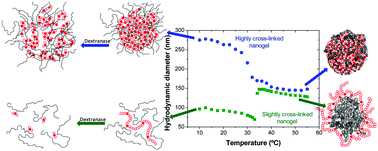Synthesis of new enzymatically degradable thermo-responsive nanogels
Abstract
Two new families of thermo-responsive and enzymatically degradable nanogels were synthesized by batch

* Corresponding authors
a
POLYMAT, Bionanoparticles Group, Departamento de Química Aplicada, UFI 11/56, Facultad de Ciencias Químicas, Universidad del País Vasco UPV/EHU, Apdo. 1072, 20080 Donostia-San Sebastián, Spain
E-mail:
jacqueline.forcada@ehu.es
Fax: +34-943-015-270
Tel: +34-943-018-182
Two new families of thermo-responsive and enzymatically degradable nanogels were synthesized by batch

 Please wait while we load your content...
Something went wrong. Try again?
Please wait while we load your content...
Something went wrong. Try again?
G. Aguirre, J. Ramos and J. Forcada, Soft Matter, 2013, 9, 261 DOI: 10.1039/C2SM26753E
To request permission to reproduce material from this article, please go to the Copyright Clearance Center request page.
If you are an author contributing to an RSC publication, you do not need to request permission provided correct acknowledgement is given.
If you are the author of this article, you do not need to request permission to reproduce figures and diagrams provided correct acknowledgement is given. If you want to reproduce the whole article in a third-party publication (excluding your thesis/dissertation for which permission is not required) please go to the Copyright Clearance Center request page.
Read more about how to correctly acknowledge RSC content.
 Fetching data from CrossRef.
Fetching data from CrossRef.
This may take some time to load.
Loading related content
